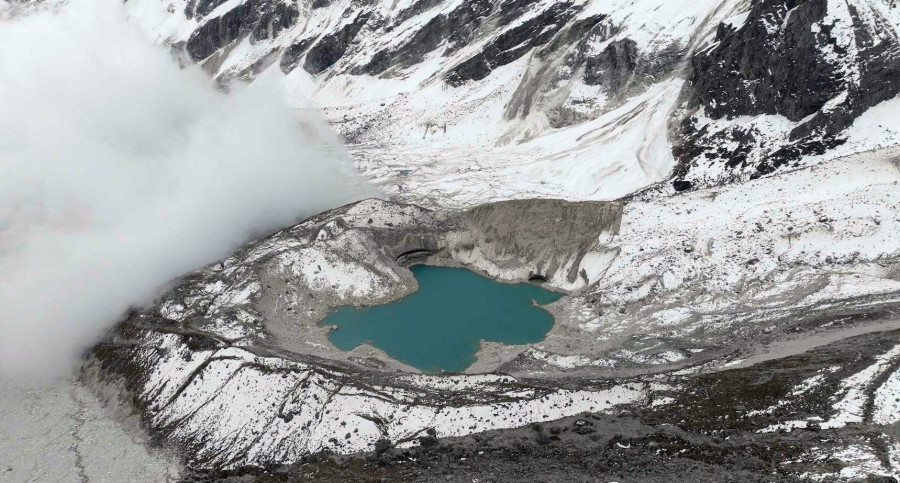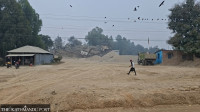National
Thame GLOF caused by chain reaction of geological and geomorphological factors, study finds
ICIMOD study stresses urgent flood risk management in the Everest region as climate change accelerates glacial hazards.
Post Report
A new study by the International Centre for Integrated Mountain Development (ICIMOD) has found that the 2024 glacial lake outburst flood (GLOF) in the Everest region was amplified by a complex chain of geological and geomorphological factors, causing extensive destruction in Thame, Solokhumbu.
The study, titled Thame Valley Glacial Lake Outburst Flood – Causes, Impacts, and Future Risks, shows that a rock avalanche triggered a displacement wave in a 4,900-metre-high glacial lake, releasing 156,000 cubic metres of water. The outflow fell 120 metres and breached a second moraine-dammed lake, releasing an additional 303,000 cubic metres. The resulting hyper-concentrated flow carried debris, including large boulders, up to 80 km downstream.
A natural narrowing of the river channel and temporary ponding of floodwaters amplified the flood’s erosive power, eroding riverbanks, triggering landslides, and covering the half-kilometre-wide valley floor near Thame, the report said.
The flood destroyed homes, a school, a health post, a bridge, and damaged a hydropower plant. No lives were lost due to the event occurring in daylight and in phases.
Sudan Bikash Maharjan, ICIMOD remote sensing analyst, emphasised the need to understand and prevent risks from even relatively small glacial lakes. “Geological and morphological factors intensified this climate-driven event to cause catastrophic damage, though thankfully with no loss of life,” Maharjan, one of the authors of the report, said.
Co-author Tenzing Chogyal Sherpa, ICIMOD cryosphere analyst, highlighted the growing risks to mountain communities from climate extremes. “It reinforces the urgent need to invest in preparedness, strengthen scientific understanding, and support those most at risk,” he said.
The study recommends protecting tension cracks, supporting riverbanks, and developing a long-term flood risk management plan for Thame, while bolstering monitoring of high-altitude glaciated regions across the Hindu Kush Himalaya, which is warming at 0.28°C per decade. Rapid glacier retreat has fueled the growth of over 25,000 glacial lakes in the region.
Arun Bhakta Shrestha, ICIMOD senior advisor, noted that glacial hazards are increasing as the HKH warms nearly three times faster than the global average. “More monitoring and engineering measures are needed to reduce damages from future events,” he said.
The Thame disaster adds urgency to translating cryospheric science into actionable policy and climate-resilient investments, such as those promoted by the Building Adaptation and Resilience in the Hindu Kush Himalayas (BARHKH) initiative, ICIMOD stated.




 15.12°C Kathmandu
15.12°C Kathmandu














